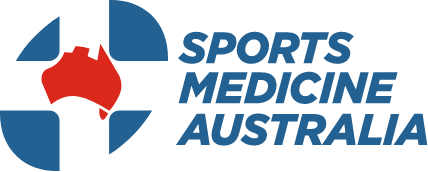The AIS, in partnership with SMA and other peak associations, will today launch the ‘Concussion and Brain Health Position Statement 2024’ and the ‘Australian Concussion Guidelines for Youth and Community Sport’.
The guidelines were developed in a collaboration between the Australian Institute of Sport, Sports Medicine Australia, the Australasian College of Sport and Exercise Physicians, and the Australian Physiotherapy Association. They bring together the most contemporary evidence-based information on concussion for athletes, parents, teachers, coaches and healthcare practitioners.
The guidelines align with the UK Department of Culture, Media and Sport, and the NZ Government’s Accident Compensation Corporation. The new guidelines build upon the ‘Concussion in Sport Australia Position Statement’ from 2019.
Sports Medicine Australia CEO Jamie Crain said:
“The new guidelines are perfect for all involved in or around sport, including parents, coaches, teachers, students and participants in community and youth sport.
“They are easy to follow and contain step-by-step actions, with an emphasis on the health of the athlete and a return-to-play only after the recommended time.
“With concussion being a major issue in sport, it is imperative that all athletes, not just those competing at an elite level who have immediate access to team doctors, get the care and attention they need.
“These guidelines will help keep all young and community-based athletes safe.
“The guidelines have been rigorously developed and reviewed in partnership with several organisations based on data, expertise and experience.
“The fact they align with international concussion guidelines demonstrates that they are practical, robust and effective.
“Sports Medicine Australia is proud of the role we played in the development of these guidelines. They will help keep youth and community sports participants safe now and into the future.”
Sports Medicine Australia CEO Jamie Crain is available for interview.
Sports Medicine Australia CEO Jamie Crain said:
“People involved in sport need more than theory and these practical steps such as the graded return to sport framework, provides just what is needed.”
The AIS return to sport protocol for community and youth sport includes:
- Introduction of light exercise after an initial 24-48 hours of relative rest.
- Several checkpoints to be cleared prior to progression.
- Gradual reintroduction of learning and work activities. As with physical activity, cognitive stimulation such as using screens, reading, undertaking learning activities should be gradually introduced after 48 hours.
- At least 14 days symptom free (at rest) before return to contact/collision training. The temporary exacerbation of mild symptoms with exercise is acceptable, as long as the symptoms quickly resolve at the completion of exercise, and as long as the exercise-related symptoms have completely resolved before resumption of contact training.
- A minimum period of 21 days until the resumption of competitive contact/collision sport.
- Consideration of all symptom domains (physical, cognitive, emotional, fatigue, sleep) throughout the recovery process.
- Return to learn and work activities should take priority over return to sport. That is, while graduated return to learn/work activities and sport activities can occur simultaneously, the athlete should not return to full contact sport activities until they have successfully completed a fully return to learn/work activities.
To support the position statement, a series of resources have also been launched on the Concussion in Australian Sport website. To view the resources and for more information about the management and prevention of concussion in sport, visit: www.concussioninsport.gov.au
—————–
Media contact: Seamus Bradley | [email protected] | 0410 256 902
